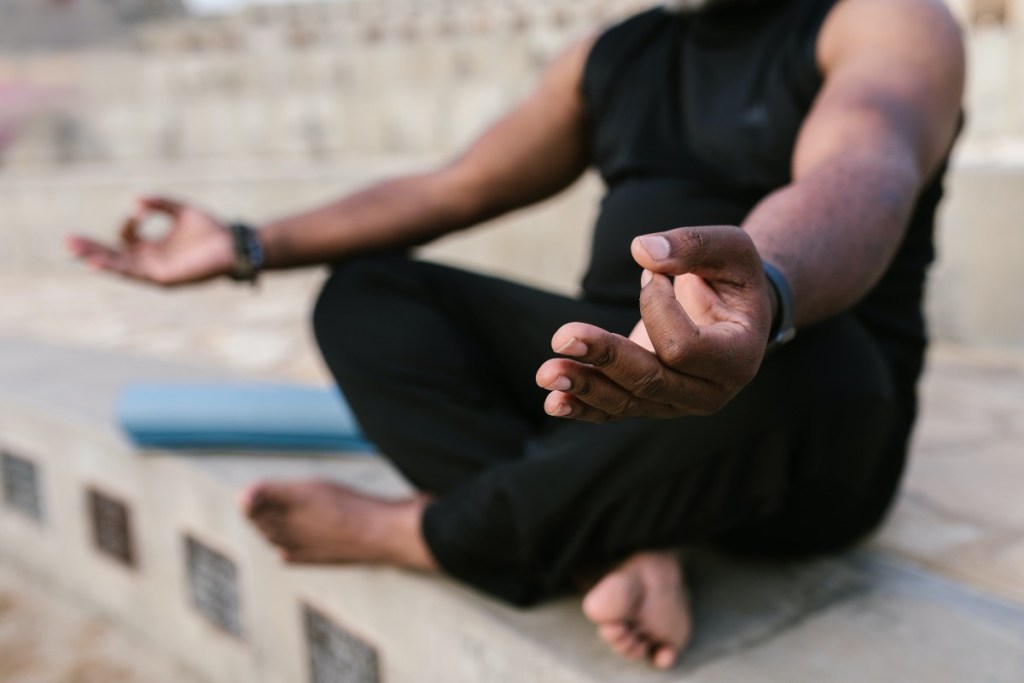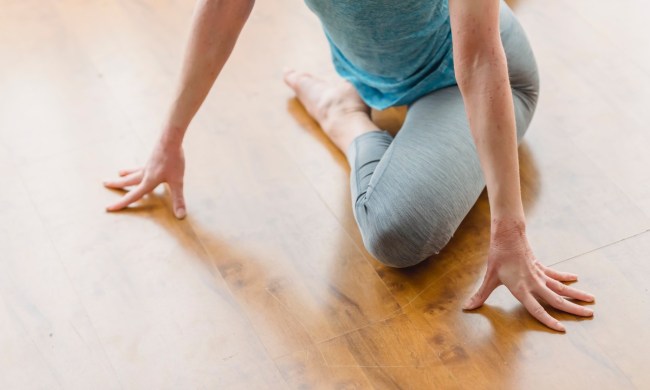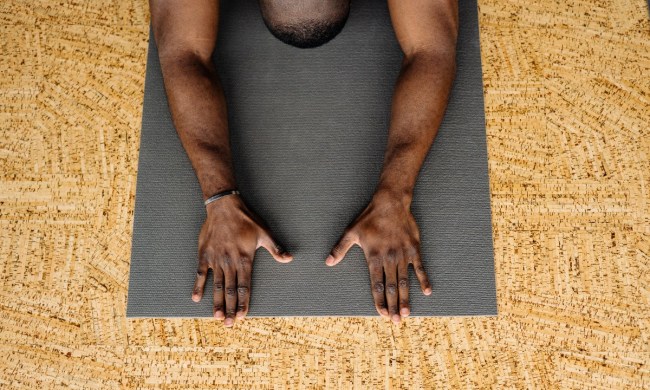Yoga can be a great way to relax and practice mindfulness. However, it can also feel intimidating to the uninitiated. TikTok videos and advertisements for the latest yoga apparel often showcase people doing seemingly impossible poses, like headstands and balance ansanas.
While those poses are part of advanced practices, there are many yoga moves for beginners. Even modest yoga practices have enormous benefits, including increased heart health, better sleep, less stress, more flexibility, and pain relief.
Consider this your guide to getting started with or diving back into yoga.

Tips for starting a yoga routine
Sometimes, the first step is the hardest. Try these tips to get the most out of your first few yoga sessions.
- Focus on acceptance, not expectations. Chances are, you’re not going to be as bendy as your instructor. Yoga is about accepting yourself and trusting the process, not competing.
- Tune into your breath. Yoga is a mind-body exercise. At first, even easy yoga poses may feel challenging. Focusing on your breath can help you reap many benefits, such as stress relief.
Yoga Moves for Beginners
While it’s good to challenge yourself, starting with simpler poses will make your practice more accessible and prevent you from getting so frustrated you stop doing yoga.
Downward-Facing Dog
A hallmark of any yoga practice, Downward Facing Dog benefits the arms, shoulders, calves, and hamstrings.
- Inhale. Get onto all fours on your mat with wrists and shoulders in one line. Situate knees directly under the hips.
- Exhale. Curl your toes under so they are in contact with the floor. Lift your hips as you straighten your legs. Keep hands firmly rooted on the ground with fingers spread wide. Roll shoulders back and down and shift your hips back. Hold the pose as long as comfortable.
- Inhale. Slowly return to all fours.
Cobra
Unlike Upward Facing Dog, your pelvis and legs remain on the mat in Cobra. The pose works the hamstrings, glutes, spinal extensors, and muscles in the upper back.
- Lie face down on the mat with palms flat and directly underneath the shoulders. Elbows should be bent.
- Keeping pelvis and lower ribs on the mat, inhale as you lift your chest off the mat.
- Roll your shoulders back and down, ensuring elbows are still grazing the side of your body. Maintain a neutral neck position as you gaze softly at the mat.
Mountain
Mountain Pose is a foundational standing move that can help you relax and establish better posture.
- Stand tall on your mat with feet parallel and hip-width apart. Your hips, legs, and feet should be in one line.
- Distribute weight evenly on your feet. Press into your heel and the ball of the foot at the base of your big and pinky toes. Bring your belly button in towards your spine.
- Elongate the spine by dropping your tailbone and rolling the shoulders back and down.
- Relax your arms at your sides. Breathe.
Tree
A step up from Mountain Pose, this yoga move focuses on balance and can be modified for any level.
- Stand in Mountain Pose.
- Bend your right knee, and place the bottom of your right foot on any part of the left leg, avoiding the ankle and knee.
- Fold hands in prayer. Breathe as you remain there for 10 breaths or as long as you can.
- Repeat on the other side.
Cat-Cow
This easy yoga pose engages the abs and can reduce back pain.
- Get onto all fours, with wrists directly under the shoulders and knees directly under the hips. Pull your belly button in towards the spine to engage abs.
- Exhale as you round your spine towards the ceiling by curving your shoulders and upper back. Tuck your chin towards your chest, and keep your core engaged. The goal is to imitate a cat with an arched back.
- Inhale as you smoothly transition to cow pose by letting your spine relax and curve toward the floor. Now is the time to let your core muscles relax. Gently lift your head to gaze towards the ceiling.
- Repeat several times.
- As you become more comfortable, you can transition between cat-cow and downward dog.
Warrior I
This pose works the whole body, from the ankles to the shoulders, and promotes alignment.
- From Mountain pose, step forward with your right leg to make a right angle. Your thigh should be parallel to the floor and your knee and ankle should be in one line.
- Gently adjust your left foot, so it forms a 45-degree angle with the mat. Keep your left leg straight by engaging your left thigh.
- Inhale and raise your arms so they are parallel with the floor. Hold for five breaths.
- Repeat on the opposite side.
Child’s Pose
This simple yoga pose promotes relaxation.
- Kneel on the floor with knees hip-width apart, toes touching, and glutes gently resting on your feet.
- Exhale. Bend forward, bringing your torso to your thighs and extending your arms out in front of you with palms facing down.
Savasana
Sav2asana typically happens at the end of any yoga practice, regardless of the level.
- Lie down on your mat with legs outstretched.
- Place your arms on the floor with hands facing up towards the ceiling.
- Close your eyes and breathe.
Apps and videos for beginner yogis
If you’re looking to do yoga from the comfort of your home, many yoga apps and videos can help. Give these a try:
- Daily Yoga (App)
- Down Dog (App)
- Yoga Studio By Gaiam (App)
- Yoga With Adriene (YouTube)
- SaraBethYoga (YouTube)
Yoga can help build physical and mental strength and flexibility. It can also help you relax and reduce anxiety and depression. Even modest, beginner’s practices can be beneficial to your health.
When starting a yoga practice, focus on your breath and small wins rather than what the person next to you can do. Remember, it’s about being the best version of yourself. Easy yoga poses, like Cobra Pose and Mountain Pose, are great ways to start and can help you build up to more challenging poses later if you’d like.
BlissMark provides information regarding health, wellness, and beauty. The information within this article is not intended to be medical advice. Before starting any diet or exercise routine, consult your physician. If you don’t have a primary care physician, the United States Health & Human Services department has a free online tool that can help you locate a clinic in your area. We are not medical professionals, have not verified or vetted any programs, and in no way intend our content to be anything more than informative and inspiring.




